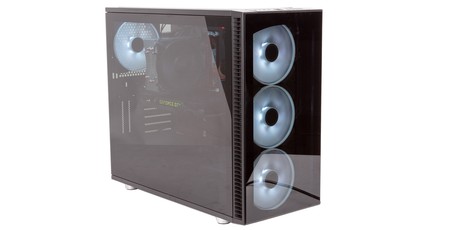
Manufacturer: Fractal Design
UK price (as reviewed): MSRP £224.99 (inc. VAT) | £179.99 for Blackout version
US price (as reviewed): MSRP $239.99 (exc. tax) | $189.99 for Blackout version
It’s finally happened: Fractal Design has gone RGB. Known for many years now as the company with some of the most understated chassis designs (or boring black boxes, depending on your perspective), the Swedish outfit has long resisted the dominant market trend – but no longer.
The Define S2 Vision RGB takes the solid Define S2 foundations (themselves built upon the Define R6) and adds four 140mm addressable RGB fans, an addressable RGB LED strip, and a physical controller to help you pick and choose the right shade of rainbow. There’s also even more tempered glass so you can see everything better and a few new design tweaks. The Define S2 Vision is still available in a cheaper Blackout version with no RGB, but it’s the fully decked out version we have for review, and it retails for a cool £225, placing it right in the middle of the excellent Phanteks Evolv X and the pricey but solid Asus ROG Strix Helios and in line with the Corsair Crystal 680X.
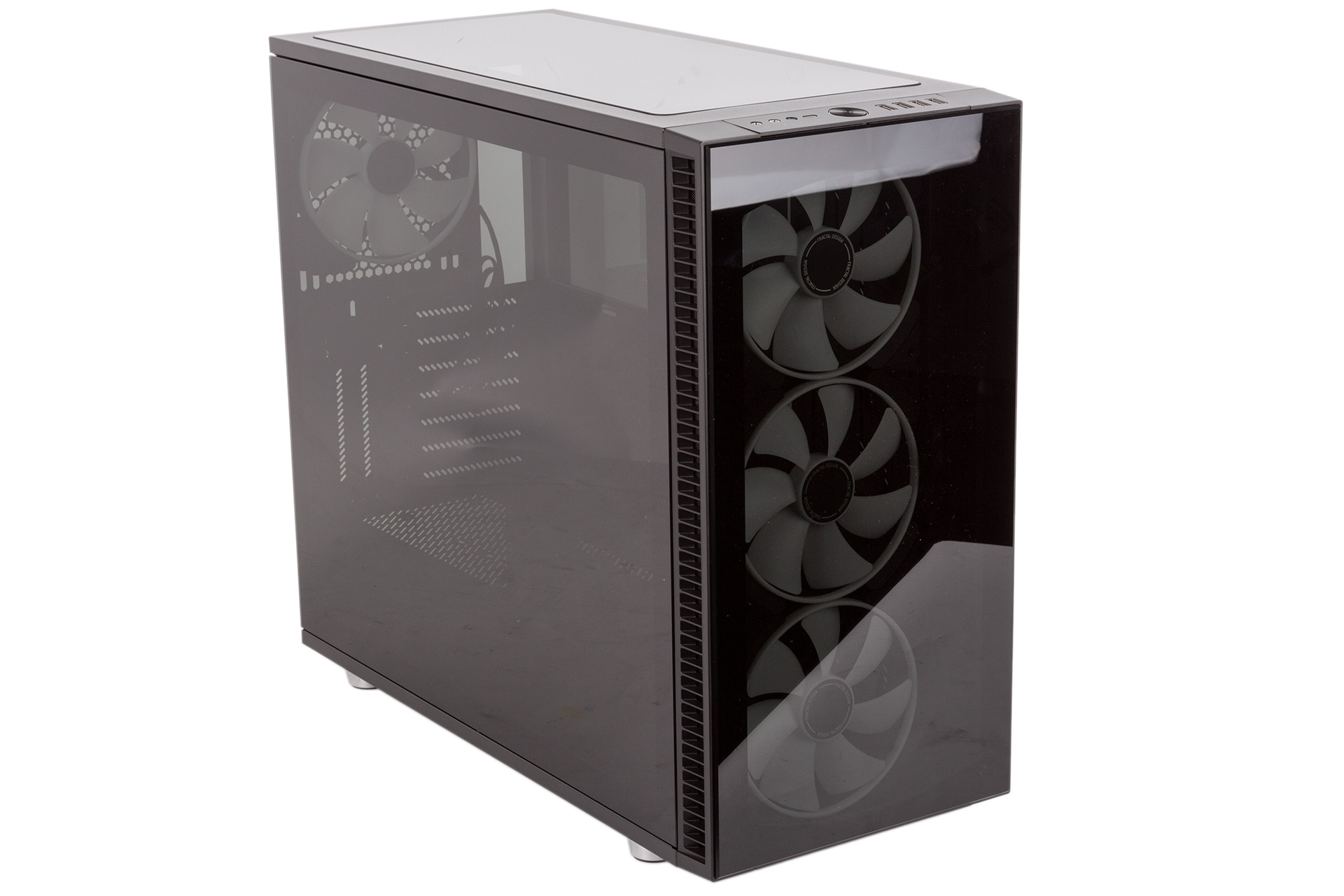
‘Vision’ is appropriate naming for a case with four tinted tempered glass panels (both sides, roof, and front). There is only one on the original, and it's clear rather than tinted. Build quality is again high throughout with minimal plastic used, and the sturdy case weighs over 12kg, distributing this across four rubber-tipped feet. A cleaning cloth is supplied to help manage dust build-up on the glass.
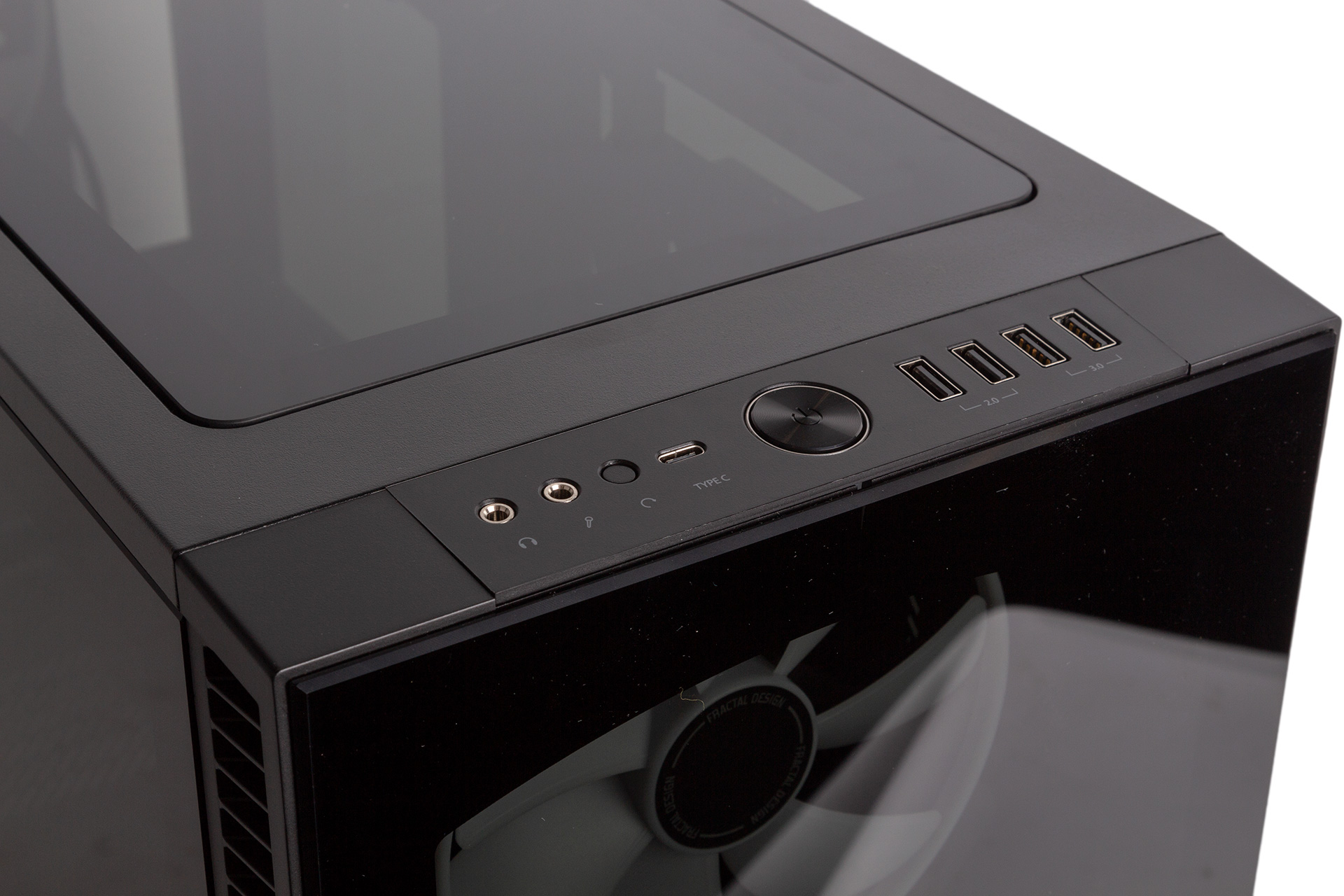
The easy-to-access front I/O is well equipped and includes one USB 3.1 Gen 2 10Gbps port with fast charging. The action on the large round power button is satisfying, and the ports are blacked out for a consistent finish. Sadly, though, the case’s addressable RGB controller is a simple internal one, and Fractal hasn’t bothered to integrate it into the front panel. You can choose to use the software from Asus, Gigabyte, ASRock, or MSI provided you have a compatible motherboard, but this strikes us as lazy given the RGB is a defining feature, and it’s something both Asus and Phanteks offer in their cases.
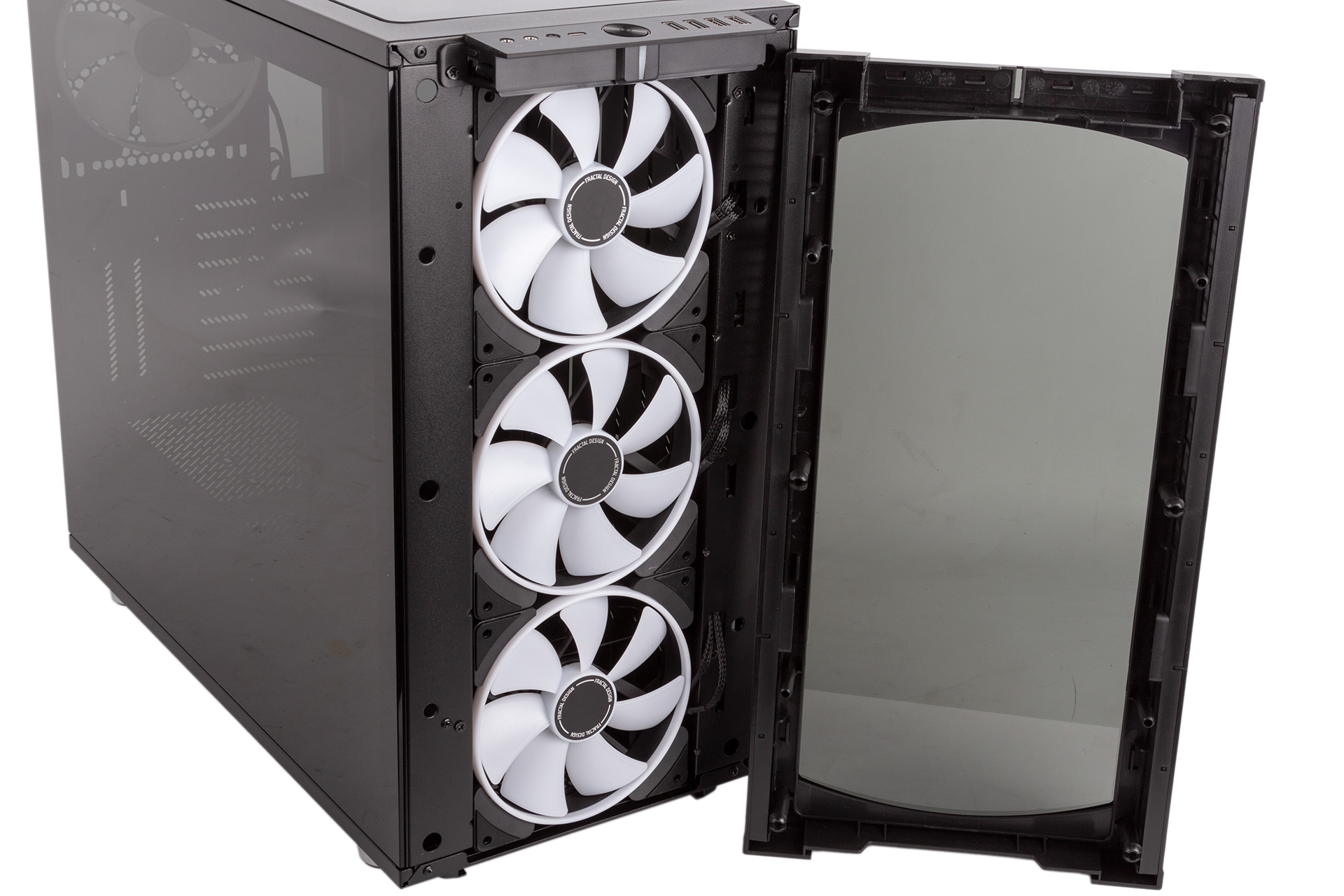
Through the front you can see the three included 140mm intake fans, which are joined by a single rear 140mm exhaust. That’s one more fan than the original, and unlike Asus and Phanteks these are addressable RGB LED fans, specifically Fractal’s Prisma AL-14 ARGB PWM models. These undoubtedly add to the cost, and users who opt for the Blackout version will instead receive four Dynamic X2 PWM GP-14 fans. Either way, Fractal has redesigned the front fan mount so that fans are mounted externally and you get a full, uninterrupted view of them, which is a nice touch given the audience this case targets. It’s also good that the fans have rubberised corners.
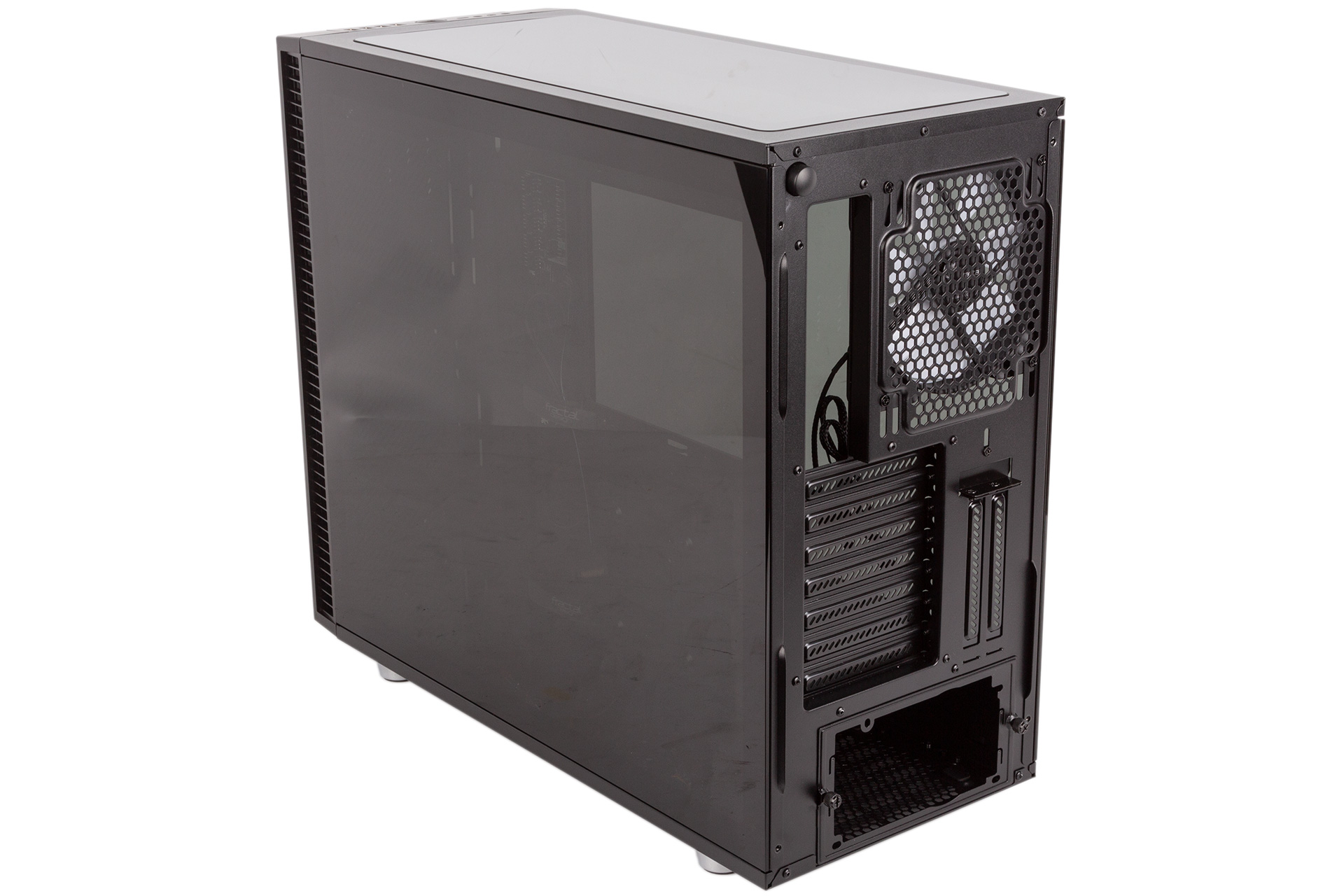
From an airflow perspective things do not look great. By default the roof and sides are sealed by their glass panels, and the front intake area relies solely on two relatively thin strips down the sides; these do at least run the whole height, though. Fractal is using significantly faster fans rated for much higher CFM values (plus there’s one more of them) this time around, and you’ll see that this does improve thermals (at the cost of noise), but this chassis is really not optimised for airflow out of the box, though you can install an extra two fans in the bottom.
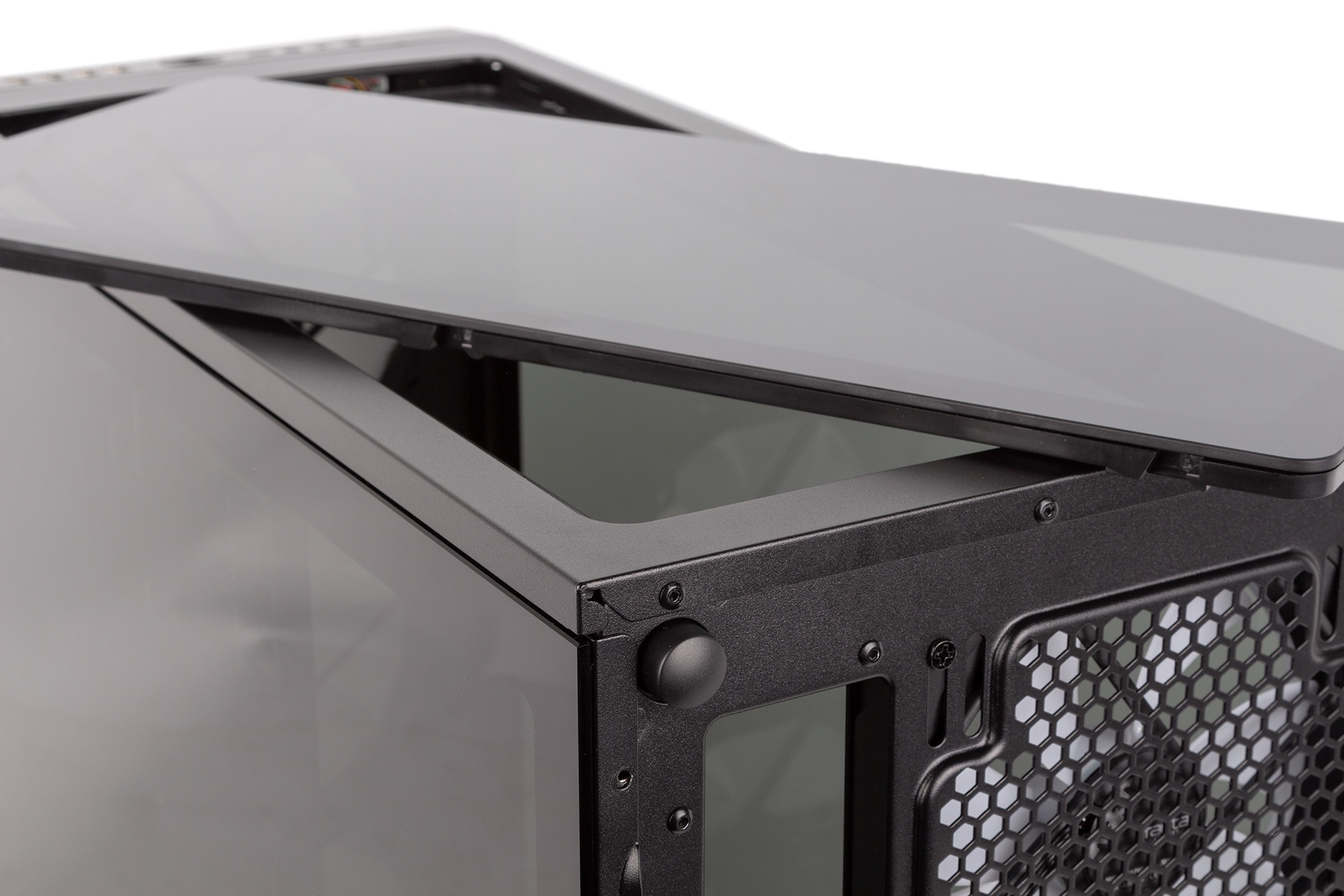

You can improve the airflow situation by swapping the default glass roof cover and the internal frame to which it connects for a steel bracket that allows you to install three fans (or a radiator) and a ventilated top cover. The glass panel pops off via a button at the back, while four screws need to be removed and reinstalled when swapping the internal frame for the bracket. The ventilated top cover (with integrated dust filter) then pops back on just as the glass did, and overall it’s an easy swap. Even without putting fans or radiators, there should be a small improvement in airflow thanks to the ventilated cover and the case having positive pressure, but you’ll need a fan or two to really make the most of it.
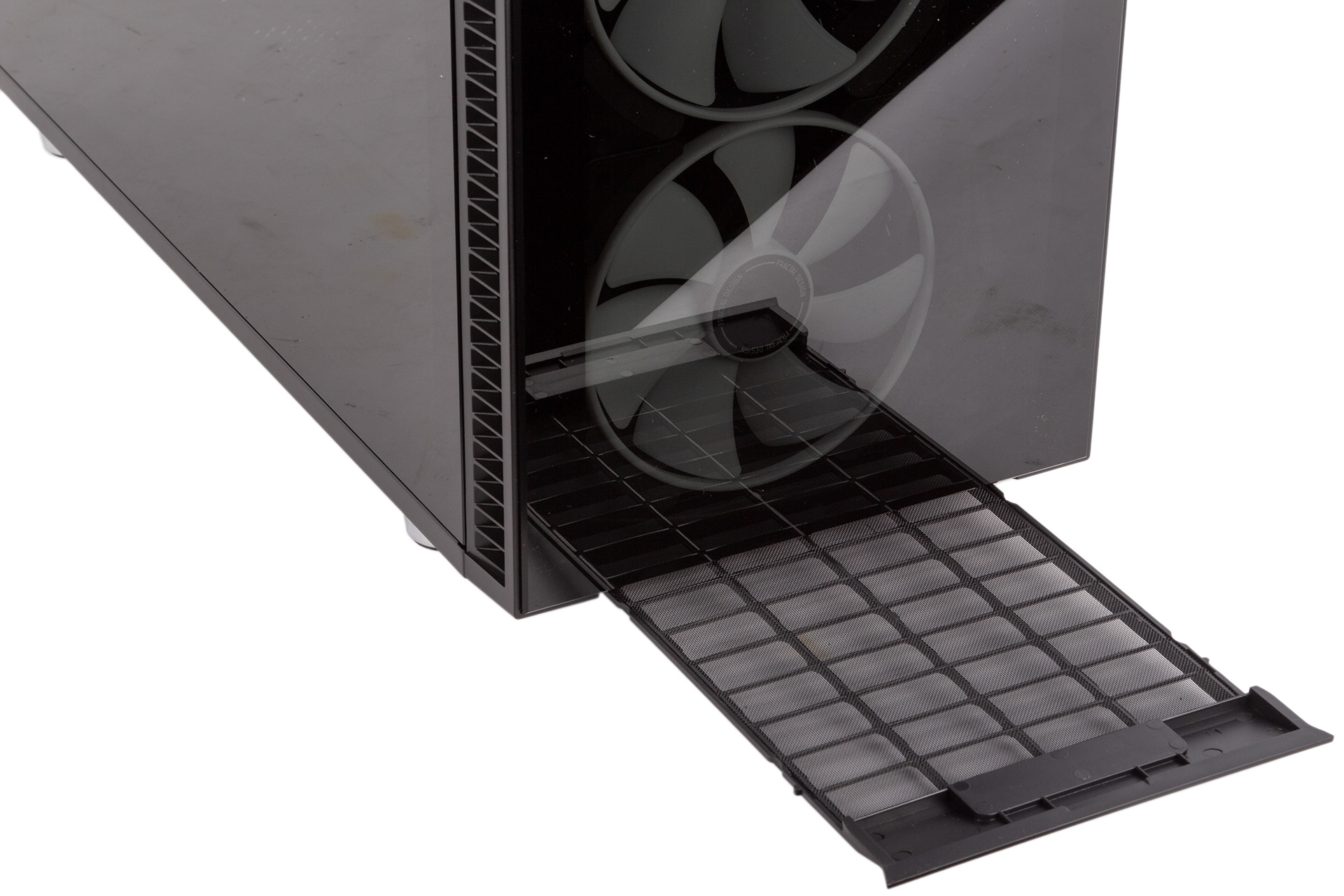
The case is fully insulated from dust, as the two side intake sections have removable filters fitted behind them (accessible by popping off the front panel), and the lower section has a full-length filter that you can easily pull out to the front along rails.
Specifications
- Dimensions (mm) 233 x 543 x 465 (W x D x H)
- Material Steel, plastic, tempered glass
- Available colours Black with RGB, Blackout
- Weight 12.1kg
- Front panel Power, reset, 1 x USB 3.1 Gen 2 Type-C, 2 x USB 3.0, 2 x USB 2.0, headphone, microphone
- Drive bays 3 x 3.5"/2.5", 2 x 2.5"
- Form factor(s) E-ATX (up to 285mm wide), ATX, micro-ATX, mini-ITX
- Cooling 3 x 140mm/120mm front fan mounts (3 x 140mm
RGB LED fans included), 1 x 140mm/120mm rear fan mount (1 x 140mm RGB LED fan included), 2 x 140mm/120mm bottom fan mounts (fans not included), optional 3 x 140mm/120mm roof fan mounts (only with cooling bracket installed; fans not included)
- CPU cooler clearance 185mm
- Maximum graphics card length 440mm
- Extras Removable dust filters, roof cooling bracket and ventilated cover, reservoir mounting bars, 1 x addressable RGB LED strip, addressable RGB LED controller, nine-port PWM fan hub

MSI MPG Velox 100R Chassis Review
October 14 2021 | 15:04

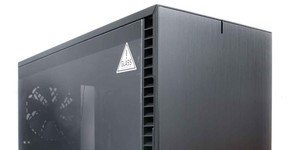
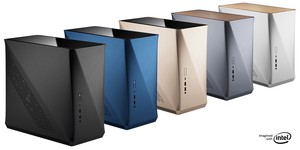





Want to comment? Please log in.